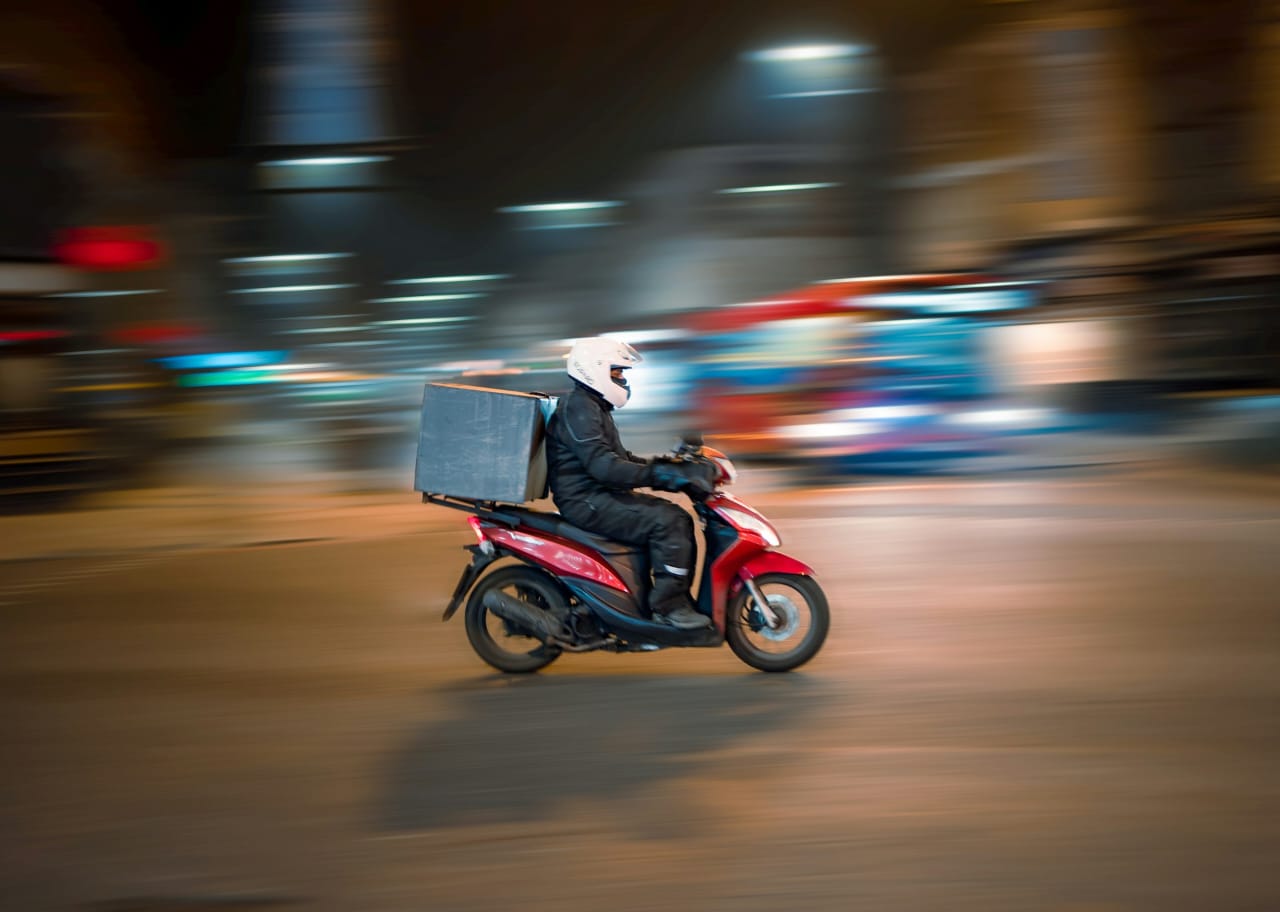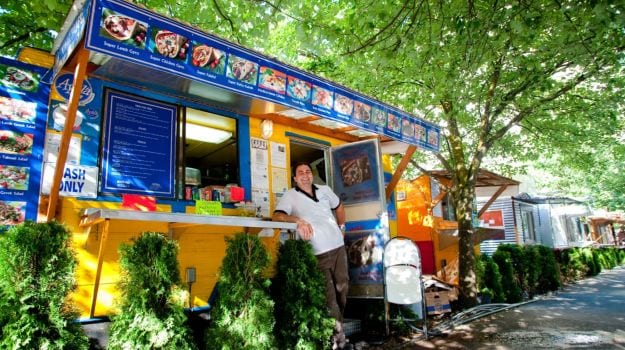Saied Samaiel in front of his Aybala Mediterranean Grill food cart. Portland's food carts have perfected the art of operating on a small scale. Photograph: Alamy
Many credit a humble 1979 planning regulation with allowing the city to maintain its sense of identity and 'keep Portland weird'.
Whenever I go to Portland, Oregon - my favourite city in America - I immediately catch the train downtown and make straight for the food carts on 10th Avenue and Alder Street. This spectacular collection of micro-eateries never disappoints.
I was there recently, making circuit after mouthwatering circuit of this cart-lined block, trying to decide between burritos, bento boxes, Indonesian satay, Hawaiian barbecue, classic kebabs, new-wave grilled cheese sandwiches, and the (presumably hyper-local) cuisine known as "Oregonian Bites". Once satisfied, the rest of my day was spent shopping at Powell's City of Books and drinking local craft beer at pubs converted out of old theatres and schoolhouses - the very things, in other words, that one goes to Portland to do.
Like San Francisco and New Orleans, the city has associated itself with a certain lifestyle. Just look at its unofficial "Keep Portland Weird" slogan. Yet it also boasts infrastructure far superior to New Orleans (its inadequacies starkly revealed by Hurricane Katrina), and a cost of living far lower than San Francisco's - hardly difficult tasks, you may say, but still it gives rise to an important urban question: how has Portland not only remained true to its identity, but remained so accessible too?
Perhaps we can look to food carts for an answer. Like Portland itself, they've perfected operation on a small scale. "We're a land of small things: small firms, small lots, small jurisdictions, small neighbourhoods," says Ethan Seltzer, professor at Portland State University's Toulan School of Urban Studies and Planning, and a former land-use supervisor at the Metro Regional Government. "We live life on a pretty local scale, and that theme has its roots in over 10,000 years of human habitation. In what was a northern temperate rainforest, people didn't have to go far to meet their needs."
Just as all the small firms, lots, jurisdictions and neighbourhoods join up to make Portland a well-functioning mid-sized city, so its deliciously minuscule purveyors of tacos, cheese steaks, noodles and kebabs tend to operate in clusters, known as "pods". You can do all the international eating you'd ever desire in the middle of this city of just over 600,000 - in humble food carts that, since the mid-1990s, have taken an organic but seemingly permanent root in Portland's downtown parking lots.
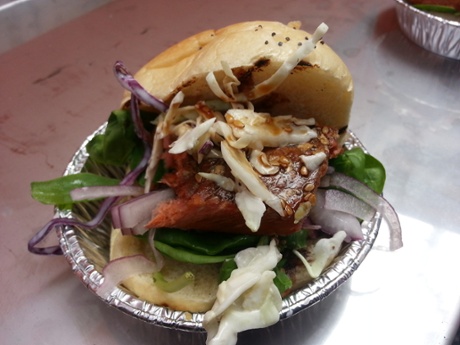
"[Food] pod development over time can be likened to any development scenario," write Kelly Rodgers and Kelley Roy in Cartopia: Portland's Food Cart Revolution. "A single cart begins the pod. As popularity picks up along the parking-lot frontage, more vendors situate themselves in the centres of the block ... [Upon] reaching a critical mass, they constitute a real street-food scene, attracting more customers with a greater variety of menus, architecture and signage. Once established, vendors generally enhance customer amenities in the form of tables and chairs in the furniture zone of the sidewalk. And voila! What was once a derelict vacant block or unsightly parking lot has become a colourful and bustling food hub."
Many people credit Portland's much-vaunted "liveability" - and the way the city's parking lots have become home to such vibrant culinary activity - to the urban growth boundary, or UGB. This planning regulation came into effect in 1979, initially limiting urban development to 229,999 acres (since expanded to 254,000 acres) in the Portland metropolitan area.
"By helping to keep the metropolitan region compact, [the UGB] centres energy on downtown Portland and the inner neighbourhoods that give the city its unusual character," write Portland State University urban studies professor Carl Abbott and PhD student Joy Margheim. "The presence of farm and forest land relatively close to the city centre enriches the lives of city dwellers through opportunities for recreation, fresh food, and reminders of the importance of traditional economic activities."
As Seltzer explains it: "Portland's urban growth boundary was intended to make outward expansion a conscious decision, a community decision, and to try to cut out the randomness that went with so much of what happened in other places. One of the key principles for planners and communities is to make what you want easy, and what you don't want hard. By and large, the numbers show that we use less land, develop within the UGB, and embed the ease of development in the value of that land, which is worth a lot more."
Many regard this humble planning regulation as having fostered a kind of "contained urbanism" that allows residents the density of a proper city (and the robust counterculture this enables) with the convenient, laid-back feel of a smaller town. The combination stirs up no small envy in visitors from other, sprawlier cities - be that the economically mightier neighbour such as Seattle to the north, or Phoenix, the whipping boy of the American build-for-cars mentality .
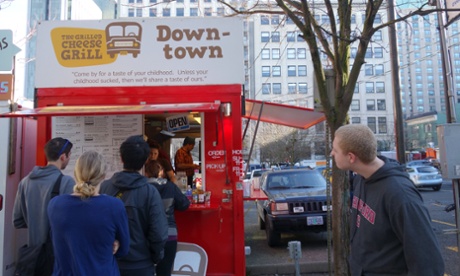
But however much the 20th century spared Portland those fates, Seltzer says the UGB was not a sprawl-killing magic bullet. "One of the most important plans here was actually taken up eight years earlier. The 1972 Downtown Plan, adopted by the City of Portland, was the beginning of the profound commitment to transit, the development of pedestrian-oriented streets, and the redevelopment of downtown into a city rather than a car-oriented attempt to compete with the suburbs. Without other plans, actions and investments, a UGB alone is not a solution. It's the combination of commitments that has made this place much more interesting than most."
Which brings us back to the city's food pods - which have certainly done their part to keep Portland if not weird, then at least interesting. "A single cart can't activate a streetscape in the same way a pod can," says Rodgers. "In cities that rely on the roaming food truck model, it's difficult for a cart to establish a presence, not only because it is singular, but also because it is temporary. The trick about the Portland carts is that they usually don't move. They become a fixture on the street, and of the street."
Just as Portland's compactness allows a visitor who shows up specifically for the microbrews or peanut-butter-and-jelly poutine (which probably does count as weird) to easily come across the city's other charms, the pods also use the most famous of their carts to draw attention to the newcomers. "Some carts function as anchor tenants," Rodgers explains, "the ones with the long lines, the ones that sell out by 1.30pm every day. Not everyone is going to wait; some customers spill over, buoying the business of the lesser-known carts."
Rodgers also praises the community spirit that springs up within the pods. Her book Cartopia quotes Rick Zeidman of Northwest Mobile Kitchen, a builder of custom food carts, observing that "vendors are generally helpful to each other. They are very open to letting others take a look inside and see how it's done. They think, 'The pie is big enough'." This attitude aligns with how Portland seems to develop in general: not too quickly, not too fiercely, and only to "big enough".
Seltzer highlights the integration between Portland's "emerging artisan/DIY economy, its lack of regulation, the interest in street activity, and the local food economy and culture" - an intersection of trends "clearly possible here in ways that aren't possible in other places".
Though it remains the most affordable major city on America's west coast, nobody would call Portland cheap, especially the areas inside the UGB where developers have concentrated for the past 35 years. With prices rising, what is stopping them simply sweeping the food carts away to build more towers?
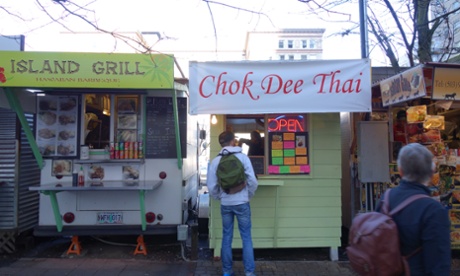
Part of the answer lies in the fact that the developers themselves set off one wave of food pods. During the first economic downturn to affect food cart culture in the 1990s, developers "had purchased parking lots with hopes of developing them but then were caught holding land without development prospects," Rodgers explains. "So a couple of them saw the food carts as a temporary solution; a way to generate revenue and also provide some value to the neighbourhood.
"Now that the economy has rebounded a bit, some of these lots are being developed for mixed-use buildings. But most of the lots downtown are owned by one family making money both through surface parking and with the food carts - they don't have much incentive to develop. Were this not the case, I imagine that those food cart pods might disappear - although with some creative leasing, they could re-appear in the ground floor of a new building."
Securing an inward flow of reasonably ambitious people constitutes a perpetual challenge for a city of Portland's size. The appeal of the "Portland lifestyle" - in which food pods play no small role - is a crucial factor in maintaining that stream of new blood. Perhaps nobody can keep a city "weird" forever - but they can keep a city concentrated, and that, more than any other quality, keeps me coming back for more.






